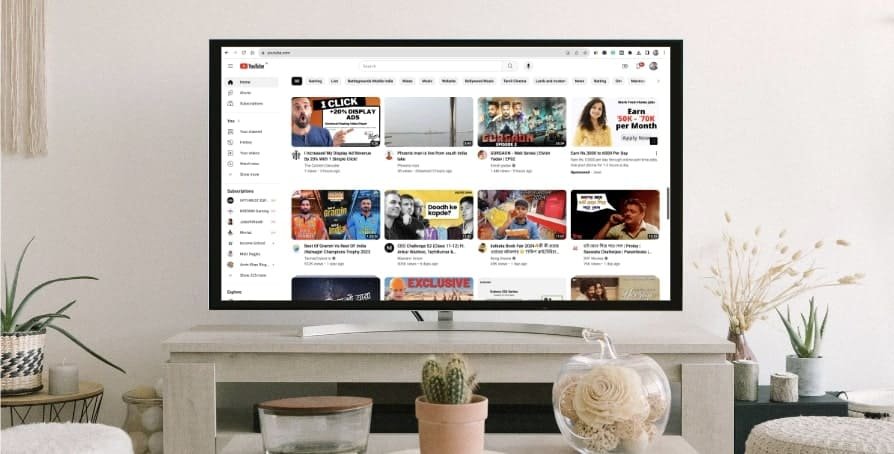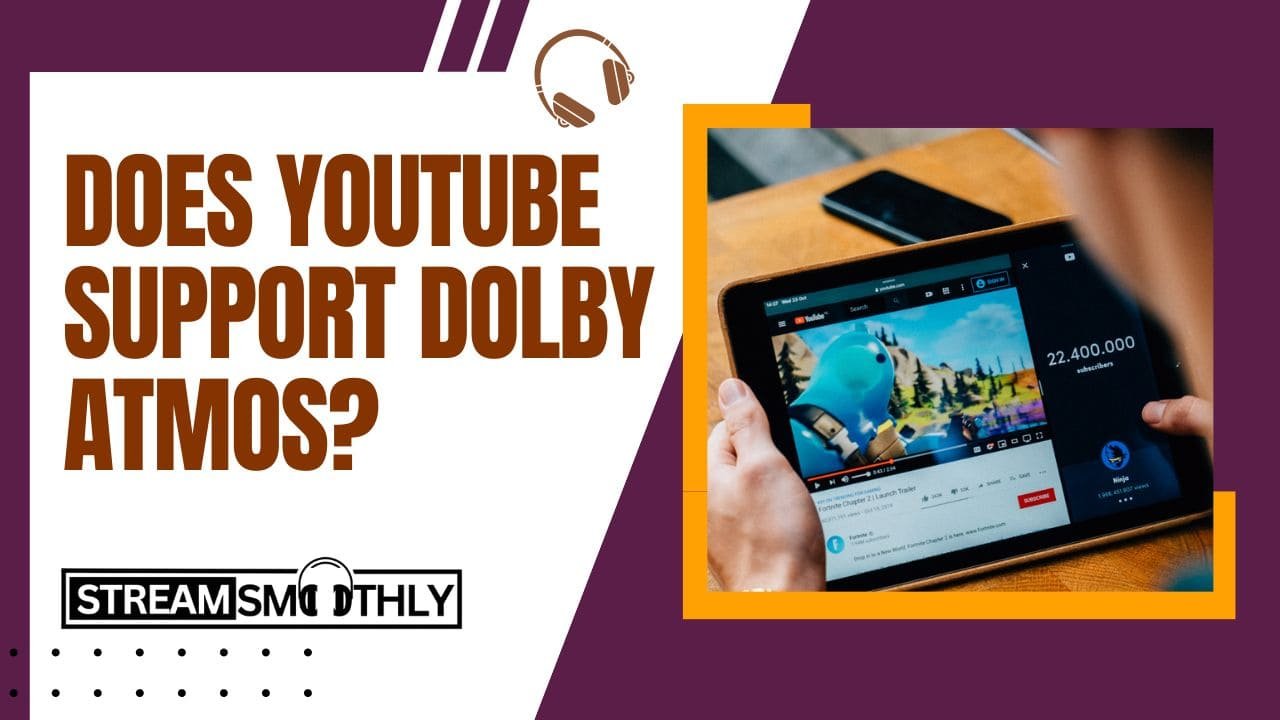This Post may contain affiliate links, when you purchase through links on our site, we may earn an affiliate commission at no extra cost to you. Here’s how it works.
In the world of digital media, the quality of audio and video greatly enhances the user experience.
Table of Contents
ToggleOne of the significant advancements in audio technology is Dolby Atmos, known for its ability to deliver immersive, three-dimensional sound.
With YouTube being one of the largest platforms for video content, a common question arises: Does YouTube support Dolby Atmos?
YouTube’s Audio Format Support
YouTube, as a platform, primarily supports audio like stereo. Stereo, involving two audio channels (left and right), is the standard format for most online videos.
While stereo can provide a satisfactory listening experience, it doesn’t compare to the immersive nature of Dolby Atmos.

Dolby Atmos is an advanced sound technology, currently, it isn’t available on YouTube. Unlike traditional surround sound, which is limited to channels, Dolby Atmos can manipulate individual sound objects, making it feel like the sound is coming from all around and above the listener.
Does YouTube Support Dolby Atmos?
YouTube does not natively support Dolby Atmos. There are several reasons for this:
- Technical Limitations: Implementing Dolby Atmos requires specific encoding and decoding capabilities. Most standard audio setups and devices that people use to access YouTube (like smartphones and laptops) are not equipped to handle Dolby Atmos.
- Content Creation and Consumption: The majority of content on YouTube is user-generated, often created with limited resources and without the sophisticated equipment required for Dolby Atmos.
- Platform Priorities: YouTube focuses on accessibility and wide compatibility, ensuring that content is easily accessible on a wide range of devices, many of which may not support advanced audio formats like Dolby Atmos.
What This Means for Users-
For YouTube users, this means that while they can enjoy a wide variety of content, they won’t experience the advanced spatial audio features Dolby Atmos offers.
Even if a content creator uploads a video with a Dolby Atmos track, YouTube will downmix it to stereo or standard surround sound, depending on the user’s playback system.
Alternative Platforms for Dolby Atmos Content
For those seeking content with Dolby Atmos sound, there are alternative platforms:
- Netflix: A leading streaming service with a significant number of titles available in Dolby Atmos. Especially notable are its original series and movies, which often feature cutting-edge audio and video technology.
- Amazon Prime Video: Offers a selection of movies and TV shows with Dolby Atmos audio. The availability can vary by region and title.
- Apple TV+: Known for its high production value, Apple TV+ includes many titles with Dolby Atmos support, enhancing the viewer’s audio experience.
- Disney+: Particularly strong in offering Dolby Atmos for its blockbuster movies, including those from Marvel and Star Wars franchises, providing an immersive audio experience that enhances the cinematic feel.
Advantages Over YouTube: These platforms offer a more immersive audio experience for content that is specifically mastered for Dolby Atmos, which can significantly enhance the enjoyment of movies and shows, especially for audiophiles and home theater enthusiasts.
Does YouTube Support Dolby Vision?
- Dolby Vision: It is an advanced form of HDR (High Dynamic Range) that improves the picture quality of videos by offering higher contrast and a wider colour palette. It’s especially noticeable on compatible displays, where viewers can see brighter brights, darker darks, and a more vibrant range of colors.
- YouTube’s Capability: YouTube does not support Dolby Vision. Videos on YouTube are generally available in standard dynamic range (SDR) or standard HDR10 format. This means that even if a video is uploaded in Dolby Vision format, YouTube’s playback will not fully utilize the Dolby Vision enhancements.

Does YouTube Support Surround Sound?
- Surround Sound Overview: This audio technology uses multiple audio channels to create a more immersive experience.
- YouTube’s Audio Formats: YouTube supports various audio formats, but traditional 5.1 or 7.1 surround sound is not natively supported. Instead, it primarily uses stereo audio, which limits the immersive experience compared to true surround sound systems.
YouTube Surround Sound vs Dolby Atmos
- Surround Sound on YouTube: YouTube’s limitation to stereo means it cannot provide the same experience as a dedicated surround sound system.
- Dolby Atmos: A step above traditional surround sound, Dolby Atmos adds height channels for a three-dimensional sound experience. Unfortunately, this technology is also not supported natively on YouTube.
Does YouTube TV Support Dolby Atmos?
- YouTube TV Explained: YouTube TV is a subscription streaming service that offers live TV, on-demand video, and cloud-based DVR from over 85 television networks. It’s an alternative to traditional cable or satellite television.
- Dolby Atmos and YouTube TV: As of the latest information, YouTube TV does not support Dolby Atmos. This means subscribers don’t get the enhanced audio experience that Dolby Atmos offers, even if they have the necessary audio setup.

The Future of YouTube and Dolby Atmos
The future may hold different possibilities.
As technology evolves and becomes more accessible, YouTube might eventually support advanced audio formats like Dolby Atmos.
Especially considering the growing trend of high-quality content production and the increasing availability of home theatre systems compatible with these technologies.
Conclusion:
Currently, the answer to the question “Does YouTube support Dolby Atmos?” is no.
While this might be a limitation for audiophiles and those seeking the most immersive audio experience, YouTube is a versatile platform with vast content accessible to a broad audience.
As the landscape of digital media and technology advances, how platforms like YouTube will adapt to these changes in consumer expectations and technical capabilities remains to be seen.
